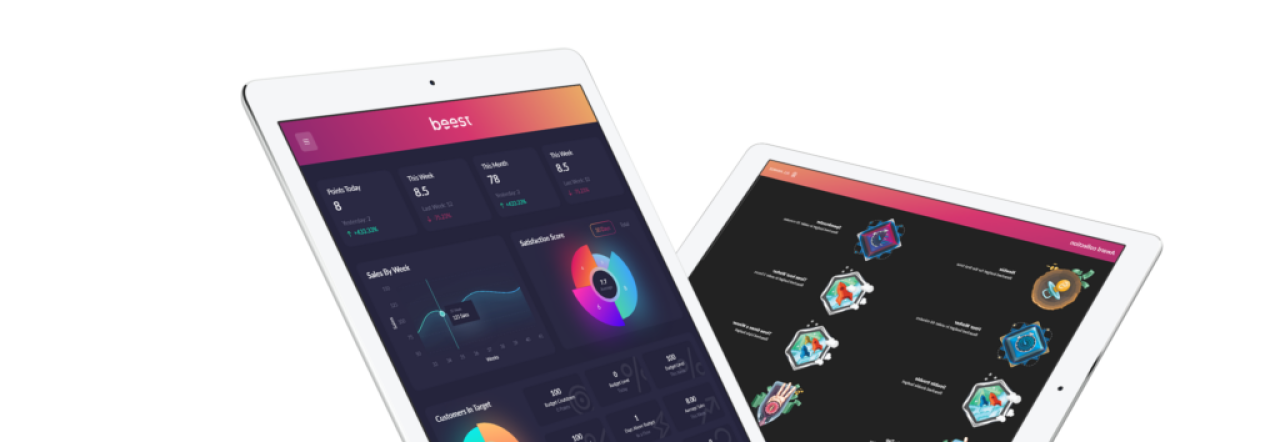Rare are the techniques that can truly revolutionize and elevate your sales planning dynamics to new heights. In today’s competitive market, it is important to explore lesser-known strategies and approaches that can set your business apart from the rest.
By incorporating unconventional methods into your sales planning process, you can optimize your efforts, drive revenue growth, and stay ahead of the competition. In this blog post, we will probe into some of these unique and rare techniques that have the potential to transform your sales planning game.
- Key Takeaways:
- Data Mining: Utilizing data mining techniques can help in identifying patterns and trends in customer behavior, which can enhance sales planning dynamics.
- Social Listening: Monitoring social media platforms and customer feedback can provide valuable insights that can be used to improve sales strategies.
- Predictive Analytics: Leveraging predictive analytics can forecast future sales trends and help in making data-driven decisions for sales planning.
- AI and Machine Learning: Implementing AI and machine learning algorithms can automate processes, personalize customer interactions, and optimize sales planning strategies.
- Scenario Planning: Creating scenarios and exploring various outcomes can help in developing contingency plans and adapting strategies to different market conditions.
Advanced Data Analytics in Sales Planning
This involves using sophisticated techniques to examine large sets of data.
In sales planning, advanced data analytics can revolutionize decision-making processes, allowing businesses to anticipate market demands and customer behavior with precision.
This predictive capability is instrumental in optimizing sales strategies and operational efficiency.
Advanced analytics utilizes statistical models and machine learning algorithms to interpret complex data patterns and generate actionable insights.
Key Factors to Consider:
- Data Quality and Accuracy
- Integration with Existing Systems
- Scalability of Solutions
- User-Friendly Analytics Tools
- Security and Data Privacy
- Real-Time Data Processing
- Continuous Improvement and Updates
Let’s explore specific techniques and actionable tips to effectively implement advanced data analytics in sales planning.
1. Predictive Sales Forecasting
Utilize predictive analytics to assess historical sales data and predict future trends and customer demands. This approach not only helps in anticipating market shifts but also assists in preparing more accurate sales quotas and targets.
Effective forecasting enables businesses to allocate resources more efficiently, ensuring that inventory levels are maintained appropriately to meet predicted demand.
2. Customer Segmentation
Apply clustering algorithms to segment customers based on their purchasing behavior, preferences, and demographic data. This segmentation allows for more targeted marketing strategies and personalized customer engagement.
Companies can tailor their sales and marketing efforts to maximize conversions and customer retention by understanding the specific needs and behaviours of different customer groups.
3. Pricing Optimization
Leverage analytics to dynamically adjust prices based on market conditions, competitor actions, and customer demand insights. This method helps in identifying the optimal pricing strategies that maximize sales and profit margins without alienating customers.
Pricing optimization is critical for staying competitive in fluctuating markets and maximizing revenue from sales.
4. Sales Territory Alignment
Use geospatial data and analytics to optimize sales territory assignments based on customer density and historical sales performance.
Efficient territory management ensures that sales efforts are balanced and that each region’s potential is maximized. This strategic alignment improves overall sales team efficiency and coverage.
5. AI-Driven Personalized Marketing
Integrate AI tools to automate and personalize marketing campaigns. AI can analyze customer data to deliver highly personalized marketing messages at scale, increasing engagement and conversion rates.
This technology allows for real-time customization of marketing efforts, making them more relevant to the individual consumer and more likely to result in sales.
Embracing advanced data analytics is essential for transforming sales planning into a highly strategic and proactive function.

Personalization Strategies
These involve tailoring sales approaches to meet the specific needs and preferences of individual customers.
Implementing personalization strategies can significantly enhance customer engagement and satisfaction, as it makes customers feel valued and understood.
This tailored approach leads to higher conversion rates and fosters customer loyalty, as personalized interactions are more likely to resonate with the needs and interests of each customer.
Personalization uses data analytics to understand customer behaviors, preferences, and history, which guides the customization of sales and marketing efforts.
Key Factors to Consider
- Comprehensive Customer Data Collection
- Effective Data Analysis Techniques
- Clear Customer Segmentation
- Scalable Personalization Technology
- Consistent Omni-channel Experience
- Privacy and Data Security
- Continuous Feedback and Adjustments
- Alignment with Overall Sales Goals
Now, let’s delve into specific techniques and actionable tips to leverage personalization strategies effectively in your sales planning.
1. Micro-Segmentation
Divide your customer base into smaller, highly specific groups to fine-tune your marketing and sales approaches.
By analyzing customer data to understand differing behaviors, preferences, and needs, you can create segments that reflect these nuances.
This level of granularity allows for highly targeted marketing campaigns and sales strategies, ensuring that your messaging is relevant to each group’s unique characteristics and likely to drive engagement and sales.
2. Dynamic Sales Scripts
Develop sales scripts that adapt to the customer’s specific circumstances by incorporating real-time data and insights. These scripts should use elements like the customer’s name, references to previous interactions, and tailored solutions to their pain points.
By making your sales conversations relevant and personal, you increase the effectiveness of your communication, enhancing the customer’s experience and boosting the likelihood of a sale.
3. Personalized Marketing Campaigns
Implement marketing campaigns that use customer data to deliver content that appeals to the individual’s specific interests and needs.
Utilize advanced analytics to track customer behavior across channels and tailor marketing messages accordingly.
This approach not only increases the relevance of your communications but also optimizes your marketing spend by focusing resources on strategies proven to engage and convert your target audience effectively.
4. AI-Driven Recommendations
Use AI technology to analyze customer data and provide personalized product or service recommendations. AI algorithms can quickly process vast amounts of data to identify patterns and preferences, suggesting offerings that are most likely to appeal to each customer.
This not only enhances the customer experience by making shopping more convenient and personalized but also increases sales by promoting products customers are more likely to purchase.
Effective personalization strategies are crucial for transforming customer interactions into meaningful relationships and driving sales success.
Innovative Communication Techniques
These refer to modern methods used to enhance the way sales teams interact with potential customers. These techniques are crucial for adapting to the changing landscape of customer expectations and technological advancements.
They allow sales teams to reach customers through their preferred channels, making interactions more convenient and effective, which in turn boosts engagement and increases sales conversions.
Innovative communication techniques utilize a combination of technology and strategic planning to deliver messages effectively across multiple channels tailored to the audience’s preferences and behaviors.
Key Factors to Consider:
- Choice of Communication Channels
- Integration of Technology Tools
- Understanding Customer Preferences
- Consistency Across Channels
- Measurement and Analysis of Impact
- Training and Support for Sales Team
- Feedback Mechanisms for Improvement
Let’s explore some specific techniques and actionable tips that can be applied to harness the power of innovative communication techniques.
1. Multichannel Sales Approach
Implementing a multichannel sales approach involves using various communication platforms such as email, social media, phone calls, and in-person interactions to engage with customers.
This strategy allows you to reach customers where they are most comfortable and active, enhancing the likelihood of interaction.
Tailoring content and timing to suit each channel’s norms and the customers’ usage patterns can significantly increase your outreach effectiveness.
2. Conversational Intelligence Tools
Utilize AI-driven conversational intelligence tools to analyze and learn from customer interactions. These tools can help you understand the nuances of customer sentiments, preferences, and communication styles, allowing you to tailor your responses more effectively.
By applying these insights, sales representatives can improve their interaction strategies, adjust their messaging in real-time, and ultimately build stronger relationships with prospects.
3. Automated Communication Campaigns
Leverage automation tools to run targeted communication campaigns. Automated emails, chatbots, and social media posts can help maintain continuous engagement with minimal manual effort.
These tools ensure timely follow-ups, consistent messaging, and scalable communication strategies that can adapt to customer behavior and feedback without overwhelming your sales team.
4. Social Listening for Customer Engagement
Implement social listening tools to monitor and respond to customer feedback and inquiries across social platforms. This technique helps you stay on top of what customers are saying about your brand, industry trends, and direct mentions.
Engaging actively with customers on social media not only boosts your brand’s visibility but also helps in cultivating a loyal customer base by showing that you value their input and are responsive to their needs.
5. Personalized Communication Strategies
Develop personalized communication strategies based on customer data. Personalization can range from addressing customers by name to tailoring offers based on their purchase history or browsing behavior.
This approach demonstrates a deep understanding and consideration of customer preferences, thereby enhancing the effectiveness of your communications and increasing the chances of sales success.
By embracing innovative communication techniques, sales teams can significantly enhance their interaction with customers, leading to improved sales outcomes and stronger customer relationships.

Collaborative and Agile Sales Planning
Such sales planning combines cross-departmental cooperation with flexible, iterative approaches to strategizing and executing sales processes.
This method enhances the ability of sales teams to respond swiftly to market changes and customer feedback, increasing overall agility and competitiveness. It also promotes unity and shared objectives across departments, which is crucial for coherent strategies and eliminating silos that can hinder business growth.
Collaborative and agile sales planning breaks the sales strategy into short, manageable cycles, allowing for continuous adjustments and cross-functional input.
Key Factors to Consider:
- Regular Cross-Departmental Meetings
- Clear Communication Channels
- Flexible Strategy Adjustments
- Continuous Feedback Loops
- Defined Roles and Responsibilities
- Customer-Centric Focus
- Data-Driven Decision Making
- Iterative Development Processes
With these factors in mind, let’s delve into practical techniques and tips that can effectively implement collaborative and agile sales planning.
1. Scrum in Sales
Implement Scrum techniques, originally from software development, into the sales planning process. Organize your sales team into small groups who work in sprints to achieve specific goals within a set timeframe.
This structure promotes flexibility and quick responses to change, ensuring that the team can adapt strategies based on real-time market data and customer interactions.
Regular sprint reviews and retrospectives help maintain a clear focus on objectives and continuous improvement.
2. Cross-Functional Workgroups
Create workgroups that include members from sales, marketing, product development, and customer service. These groups should work together on specific projects or campaigns, ensuring that every aspect of the customer journey is considered from multiple perspectives.
This approach helps align different departments towards common goals, fostering a more unified strategy and reducing friction between teams.
3. Real-Time Data Dashboards
These dashboards can track sales metrics, customer behaviors, and market trends, providing a shared, up-to-the-minute view of business performance.
By having access to the same data, teams can make informed decisions quickly and collaboratively, enhancing the agility of sales planning.
4. Regular Strategy Pivot Sessions
This practice should be integrated into the sales planning cycle, allowing teams to evaluate what’s working and what isn’t, and make necessary adjustments.
These sessions encourage a proactive approach to change, ensuring the sales strategy remains relevant and effective in the face of evolving market conditions.
Embracing collaborative and agile sales planning is essential for building a responsive, cohesive sales operation that thrives on both internal synergy and external opportunities.
Psychological Tactics in Sales Planning
These involve using insights from behavioral economics to influence customer decision-making processes.
These tactics are essential because they tap into the subconscious factors that influence how customers make purchasing decisions, such as emotions and cognitive biases.
By understanding and leveraging these aspects, sales professionals can craft strategies that are more likely to resonate with potential clients, thereby improving engagement and increasing sales.
Psychological tactics work by applying principles of human behavior to create compelling sales messages and interactions that trigger positive emotional responses and decision-making biases.
Key Factors to Consider:
- Understanding Customer Emotions
- Recognizing Cognitive Biases
- Ethical Application of Tactics
- Customer-Centric Approach
- Consistency in Messaging
- Tailoring Tactics to Audience
- Monitoring and Adapting Techniques
Let’s explore practical techniques and actionable tips for effectively implementing psychological tactics in your sales planning.
1. Principle of Reciprocity
Implement the principle of reciprocity by giving something of value to customers before asking for their business. This can be in the form of free samples, valuable information, or helpful services.
When customers receive something for free, they are psychologically inclined to return the favor, which can make them more receptive to making a purchase.
This tactic not only fosters goodwill but also encourages a positive initial interaction with your brand.
2. Utilizing Social Proof
Social proof is a powerful tool in persuading potential customers to commit to a purchase. Showcasing testimonials, case studies, and reviews from satisfied customers can significantly boost trust and credibility.
When potential buyers see that others have had positive experiences, they are more likely to feel confident in their decision to buy from you.
Incorporating social proof effectively requires selecting stories and data that align closely with the target audience’s expectations and needs.
3. Creating a Sense of Scarcity
Leverage scarcity by promoting limited-time offers or exclusive products. When customers perceive that something is scarce, they are more likely to desire it due to the fear of missing out.
Ensure that these tactics are used genuinely to avoid undermining trust – highlight the uniqueness of the offer and the value it provides to encourage quicker decision-making without appearing manipulative.
4. Anchoring Effect in Pricing
Use the anchoring effect by setting a high initial price or reference point next to cheaper options. Customers tend to rely heavily on the first piece of information offered when making decisions.
By presenting a higher-priced item first, subsequent options seem more reasonably priced, making them more attractive. This strategy can effectively guide customers towards desired pricing tiers or products.
5. Commitment and Consistency
Encourage small initial commitments that can lead to larger engagements. When customers commit to a small request (like signing up for a newsletter), they are more likely to agree to bigger requests (like making a purchase) to maintain consistency in their behavior.
Design your sales process to start with low-risk, low-commitment interactions that build over time, facilitating a deeper engagement and higher likelihood of closing sales.
Incorporating psychological tactics into sales planning is a powerful way to enhance the effectiveness of your sales strategies and connect with customers on a deeper, more emotional level.

Final Thoughts | Elevate Your Edge: Master Unconventional Sales Techniques
Elevating your sales strategy with rare and innovative techniques isn’t just smart; it’s a game changer.
From tapping into the power of emotional intelligence to the compelling art of storytelling and the dynamic use of gamification, these fresh approaches can dramatically differentiate your business from the competition and forge deeper connections with customers.
By integrating these unique strategies into your sales planning, not only do you boost team performance and customer engagement, but you also drive significant sales growth.
Ready to really revolutionize your sales process? Invest in field sales management software today, and turn these groundbreaking strategies into everyday excellence.
The post What Rare Techniques Can Enhance Your Sales Planning Dynamics? appeared first on Beest.
source https://beest.app/what-rare-techniques-can-enhance-your-sales-planning-dynamics/















